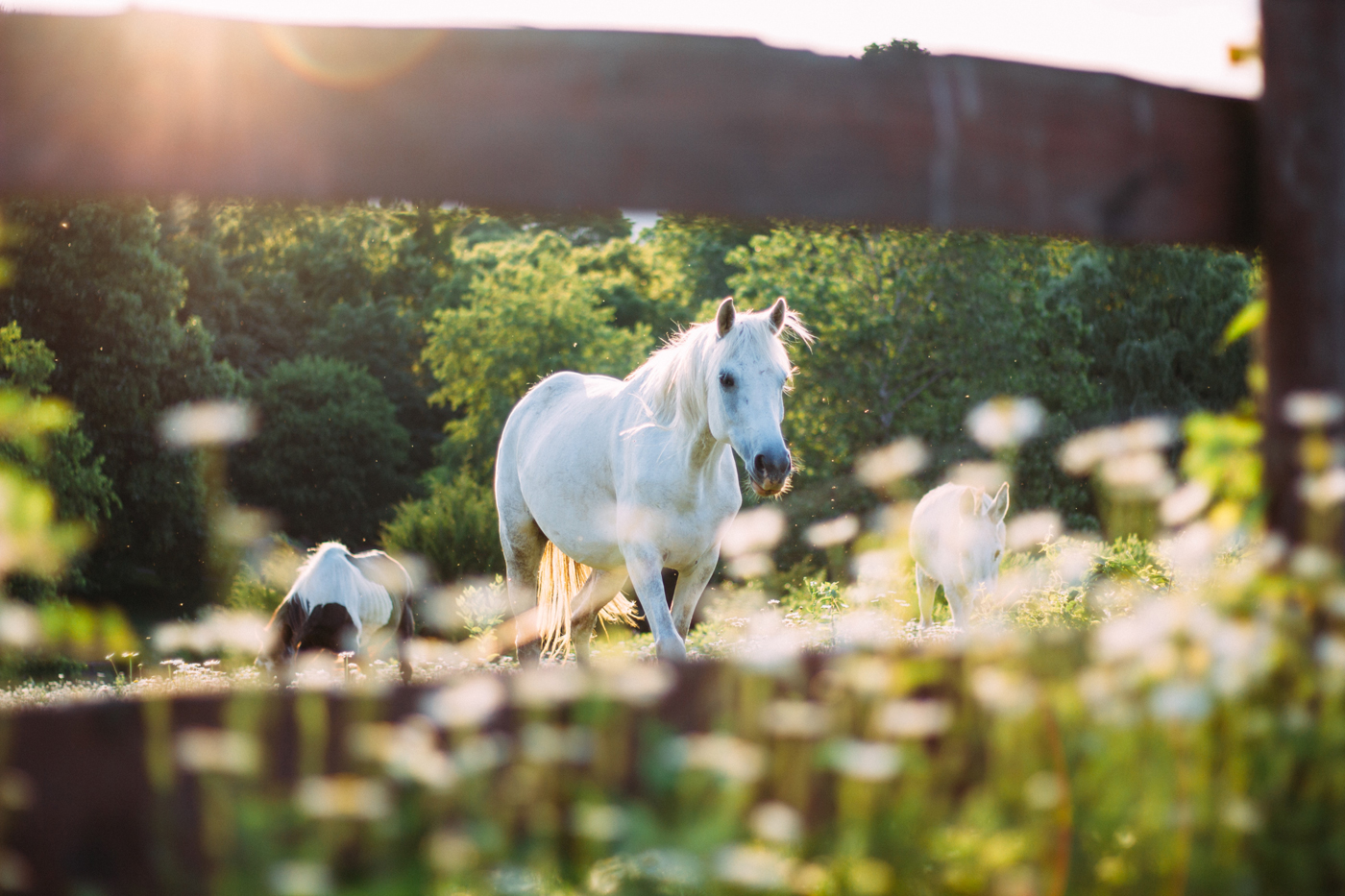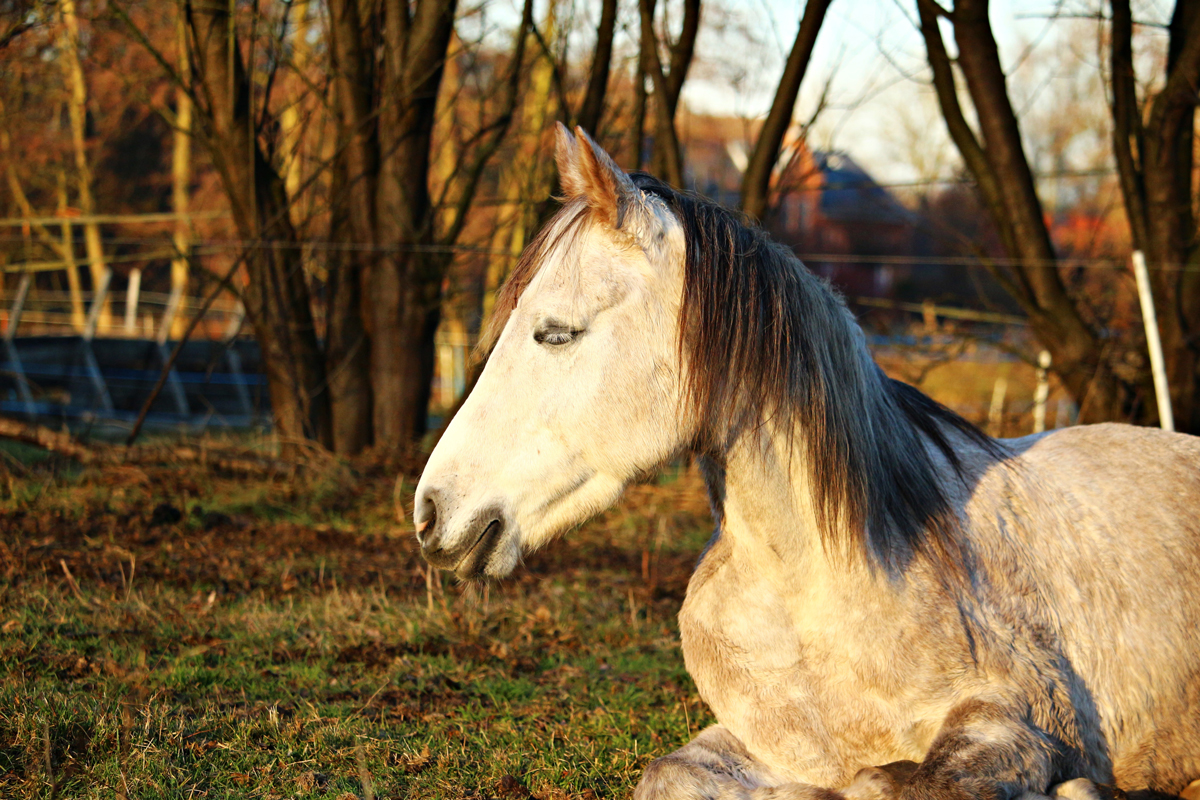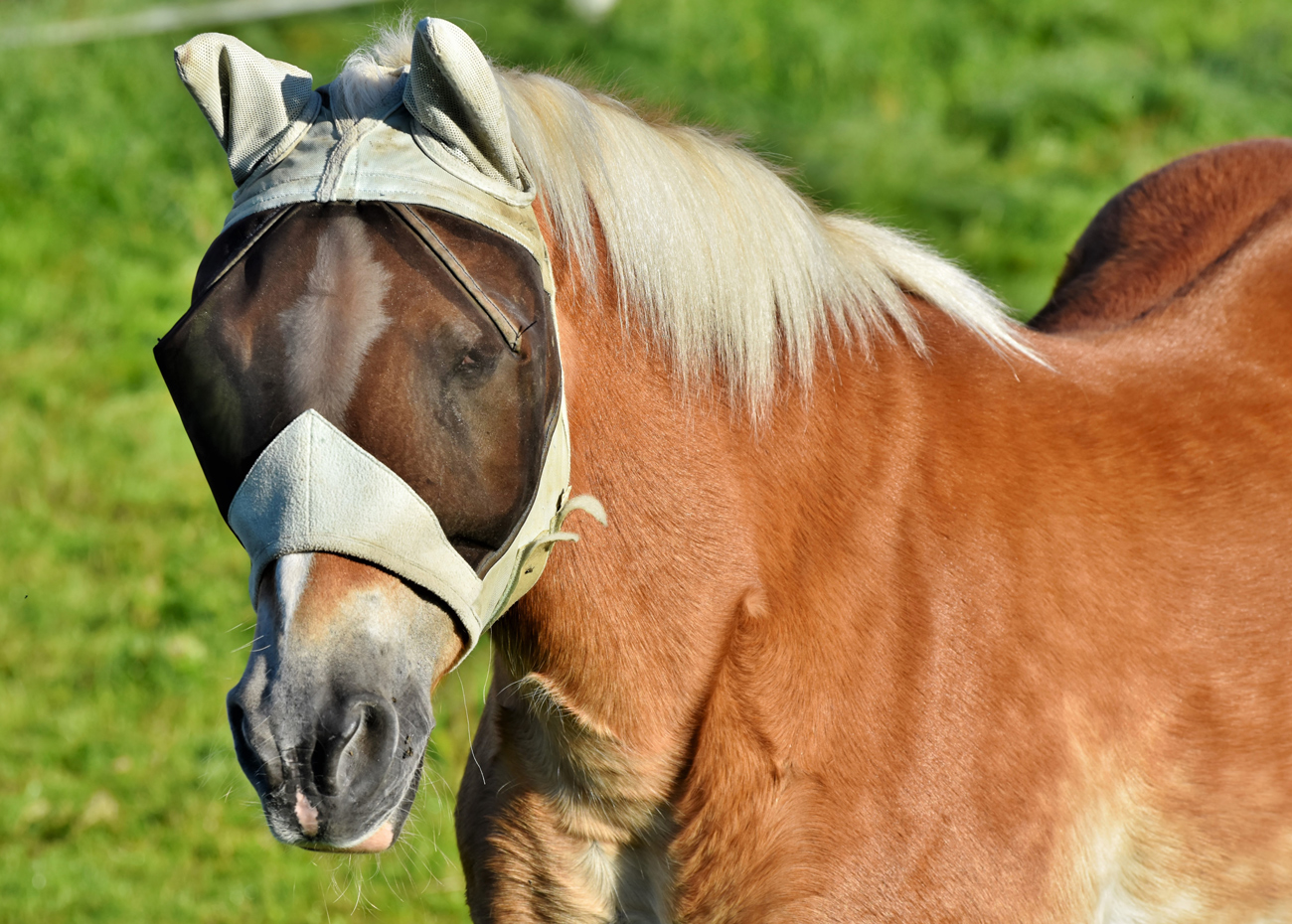With the UK weather so changeable, you never know when it might rain or shine. Sometimes you get both at the same time! And when an overcast, grey day changes to a bright, sunny one, you have to be ready. Horses, just like their human owners, are susceptible to sunburn and need to be well protected.
Being prepared for all eventualities is great, that’s why our horse rider insurance is so highly recommended. So, don’t forget your equine friend when the sun shines and make sure you know how to prevent sunburn.
Which horses are most prone to sunburn?
Just as with any animal, pigmentation in hair and skin can provide protection against sunburn. So, any non-pigmented horse or ones with white or pink areas like greys or pintos are particularly susceptible.
If your horse is kept turned-out 24/7 during the summer months then it’ll obviously be more at risk. But it’s important to be aware that sunburn can strike at any time of year.
In terms of where on the horse’s body sunburn occurs, it’s most likely on their faces, ears and lower legs.
These are the areas where horses most usually have non-pigmented patches and less hair – the sight of a pink, peeling nose is not uncommon. However, horses with thin hair can get burnt elsewhere.

Health risks to your horse
As with humans, sunburn usually causes discomfort, redness and peeling of skin. Wearing a saddle or bridle over sunburnt skin is going to make the discomfort that much worse.
A horse that keeps getting sunburn can suffer from long-term problems such as keratosis (thick and scaly skin) and even skin cancer.
Sunburn can also mean that the skin is less able to fight off infections such as bacterial folliculitis and mud fever.
If your horse gets sunburn then bring them inside to recover and treat the sunburn as you would your own. Call a vet if there is any blistering or oozing as infections need to be guarded against and other treatment might be necessary.
Sunburn can also cause dehydration, another risk in hot weather. Horses can double their water intake during these times so it’s important to keep an eye on their drinking.
Signs of dehydration include sluggishness, poor performance, thick saliva, increased pulse and breathing rate, nostril flaring, depression and the production of dark or little urine.
If dehydration isn’t acted upon, this can lead to heat exhaustion and potentially life-threatening heat stroke. If you think your horse has heat stroke, cease any exercise immediately, call your vet and cool the horse as quickly as possible.
To do this, stand the horse in a shady area (ideally where there’s a breeze) and wet your horse with copious amounts of water. In particular make sure the large veins on the insides of the legs and neck are continuously cooled.
Follow 30 seconds of soaking with 30 seconds of walking your horse lightly. Walking will aid circulation and help them cool down more effectively. Your horse should be offered around half a bucket of electrolyte solution to drink to replace lost salts. If that’s not possible then offer plain water.
Knowing your horse well and knowing its normal behaviour is key to spotting warning signs early and preventing things from getting worse.
Equesure’s horse rider insurance can be complemented by horse insurance to cover vets fees up to £1,000 for accidental injuries.

Photosensitisation
Sometimes a horse is inexplicably sunburnt. In this case they might be suffering from photosensitisation. This is a condition where skin reacts abnormally to UV light.
This usually occurs because certain photosensitisers have entered the horse’s bloodstream. Photosensitisers can be found in some drugs and plants such as St John’s Wort and some clovers.
Photosensitisation can also occur in horses with severe liver damage – so be sure to get a vet to visit if you notice any abnormal sensitivity.
How to prevent sunburn
While we slather on the sunscreen and wear wide-brimmed hats, what can we do to prevent our equines getting burnt?
- Use protective clothing – many items of horse ‘clothing’ on the market come with layers to protect your horse from the effects of UV light. These include fly sheets, fly masks and turnout boots to cover any sensitive areas.
- Sunscreen for horses – while there are some equine-specific products, many owners use human products, such as children’s or infants sun creams, on their horses. While coloured creams are available so owners can see that areas are appropriately covered, these aren’t always suitable for the showground!
- Provide shelter – if your horse is turned out during the day there needs to be a place to give them shade. Whether a field shelter or a stand of trees they need somewhere to take a break from the sun.
- Stabling – avoiding sun exposure completely might be the best option for some horses. Stabling your horse during the day and turning them out between dusk and dawn could work for horses very prone to sunburn.

Issues for riders
Sunburn over a horse’s back or face means you’ll want to wait for the burn to heal before you can ride the horse again.
After all a saddle or a bridle rubbing on top of a painful burn will make your horse suffer needlessly.
They could also become unsteady under your weight and less responsive to your commands – a dangerous combination when it comes to the safety of both rider and horse.
Protect yourself with horse ride insurance
Our dedicated team at Equesure have over 60 years’ combined experience in the equine insurance market. They will search our varied and trusted panel of insurers to find a policy tailored to your requirements.
Whether you ride regularly or just occasionally, we’ll find a policy for you. Cover can come with various options including:
- Personal accident cover up to £20,000 for adults and £10,000 for juniors
- Personal dental treatment cover up to £1,750
- School fees for juniors
Get a horse rider insurance quote from Equesure today.
Policy benefits and features offered may very between insurance schemes or cover selected and are subject to underwriting criteria. Information contained within this article is accurate at the time of publishing but may be subject to change.






